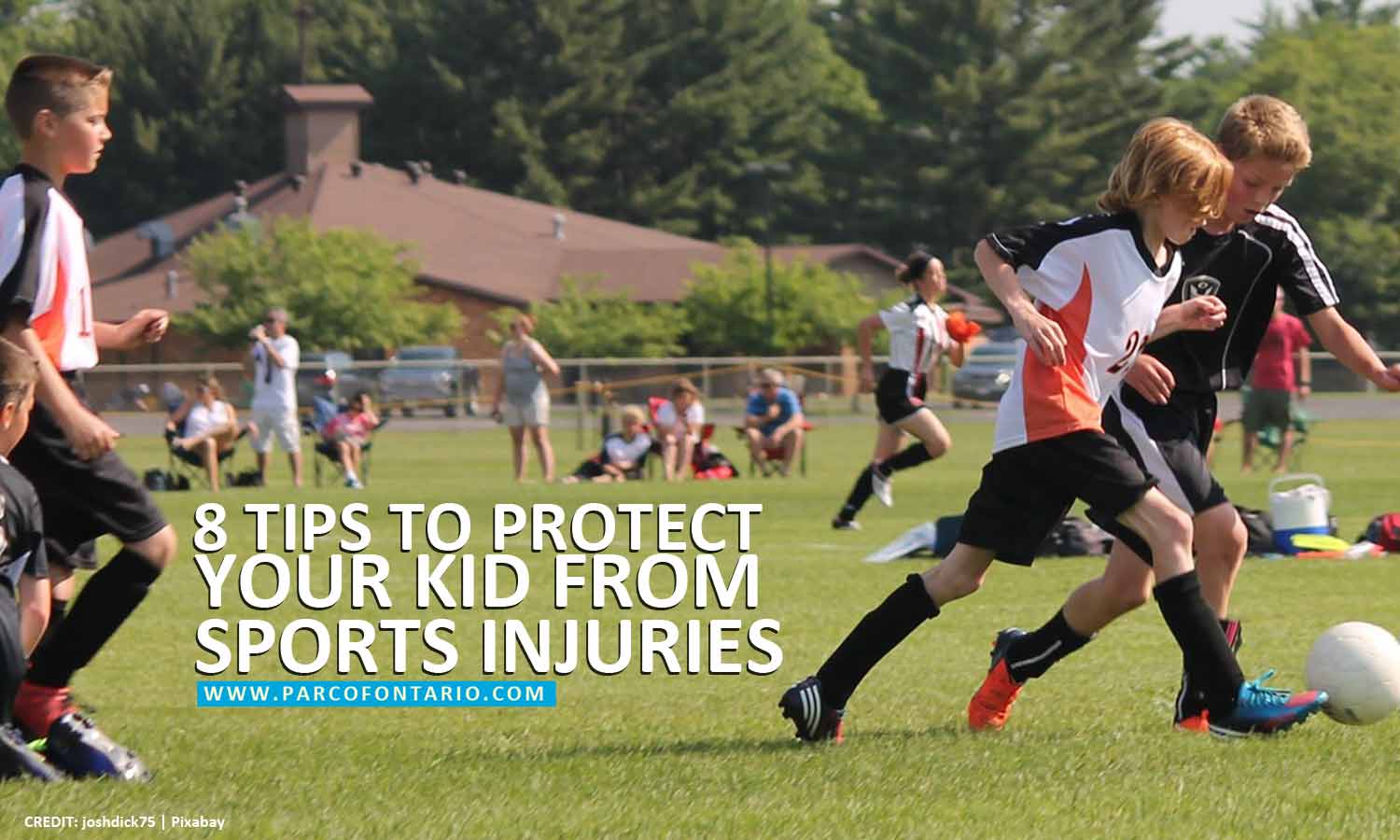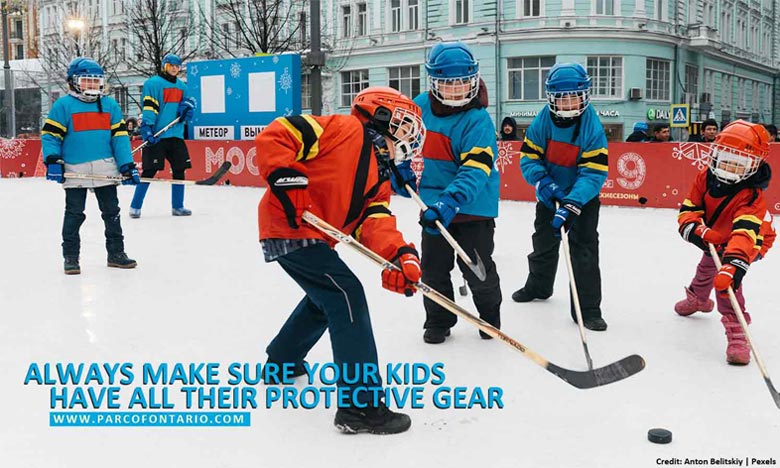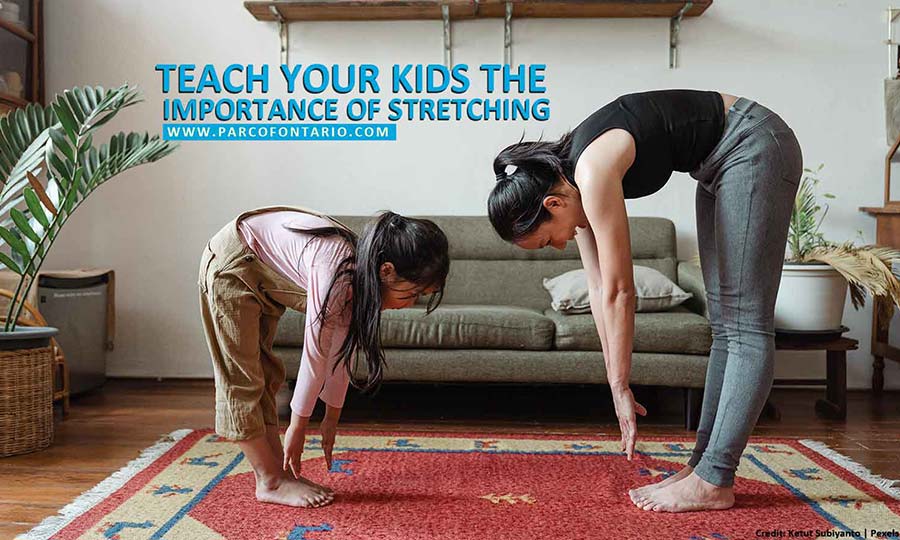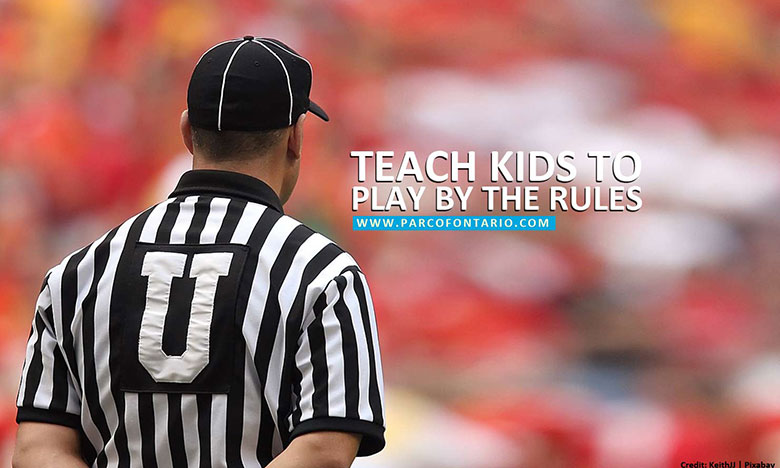
Text Neck: Causes, Symptoms, and Prevention
Many of us spend long hours hunching over our electronic mobile devices and laptops. As we spend more time texting, browsing social media, and reading on our devices, this constant downward gaze…
Read More

Sports injuries are one of the hazards of being an athlete. However, sports injuries in children may be one of the last things on a parent’s mind. While you may want your little athlete to think about the positives, like the camaraderie, fitness, and strong work ethic they learn on the court (or field), injuries are a reality of the sport — any sport. Before that happens, it pays to take steps to prepare your children and minimize the risk of any injury.
Here are some tips to help keep sports fun for your kids and help them avoid getting hurt.

Perhaps the easiest way to prevent injuries in the middle of playing is to wear the right gear. Helmets are the most common type of protection and are a must for a variety of sports (e.g. football, hockey, and skateboarding). Always make sure the helmet fits your little one’s head snugly but comfortably. If the helmet comes with a strap, always make sure it’s fastened to keep the helmet on during play.
Other sports may require other gear (e.g. mouthguards, eye protection, and knee and elbow guards). Wearing the right shoes can also improve your child’s chance of avoiding injury, including ones with a long-term impact like plantar fasciitis or stress fractures.
Before you let your little athlete get out and play, it’s a good idea to make sure they’re in proper physical condition. Schedule a preseason physical exam to ensure your children are physically fit enough for their sport of choice.
If they have pre-existing conditions or previous injuries, it’s doubly important to check before the season begins to catch any underlying problems that could place your child at risk in the field.

When it comes to playing safely, there’s always some warm-up time to prep the body first. Remind your kids to do some basic exercises before and after playing to ease them into and out of their workouts. Stretching helps loosen the muscles and get them ready for exercising. These routines are especially important for kids, whose bodies are still developing.
Start them out with slow stretches and gradually increase the intensity until they hit game speed. Another thing to remember is incorporating sport-specific movements. Soccer players should train their side-to-side agility, while swimmers should improve the flexibility of the shoulder and chest muscles. These sport-specific moves provide extra help getting the body ready for the exact actions needed to play the game.
Many children tend to pick one sport and stick with it for much of their time. However, it’s a good idea to encourage cross-training and get your kids to try out different sports activities. Changing routines regularly is a great way to avoid putting stress on the same joints and muscles. Consider limiting how many teams your kids join each season, and urge them to switch up routines regularly to give the muscles and joints a break.
One thing that works for many athletes is yoga. Yoga has plenty of benefits to keep young sports enthusiasts in shape physically and mentally, from strengthening the core to improving flexibility. Cross-training is an excellent approach to helping your kids gain the strength and flexibility to compete at higher levels and minimize the risk of injury as their training and games become more demanding.

The rules exist for a reason; they are designed to protect players and must be followed to the letter. It pays to impress on your kids the importance of sticking to the rules. When your kids have an in-depth understanding of the ABCs of the sport (especially regarding what is and isn’t legal), it’s much easier to play safely and avoid taking risks that could result in injury.
Another thing to remember is understanding appropriate levels of competitiveness. While it’s good to push your kids to give their best effort, remember that sports are meant to be fun for them. Youth sports are more about education and enjoyment. Keep your little athletes focused on those concepts to make it easier for them to have fun and avoid pushing themselves too hard.
A healthy, balanced diet is always critical for growing children, more so when they’re young athletes. Proper nutrition gives your kids the fuel they need to play at optimal levels and gives them what they need to grow stronger as they get older.
Let them stick to a diet of lean meats, fruits, and vegetables so your kids have plenty of fuel for play and healthy development of bones and muscles. While you’re at it, set up regular eating schedules each day to keep up with your little athlete’s normal routine. In some sports (e.g. wrestling), extra emphasis is placed on athletes’ weights. Watch what your children eat and make sure they follow safe eating habits to maintain a healthy weight for their sports.

The amount of water your child needs depends on their age, weight, and physical activity. Generally, children over the age of 8 should drink 8 glasses (or 2 litres) of water. Heat-related illnesses are a major concern among athletes, more so when it’s hot. Make sure your children get plenty of water both on and off the field.
Water in the system is key to keeping the muscles, joints, and blood vessels working optimally when your kids need them most. The night before practice or games, it helps to give your kids plenty of water to prepare for the next day. Have plenty of water waiting for them on the sidelines during the game. When the game is over, give them a sports drink (preferably one with low sugar content) to replace all the fluid and electrolytes lost during play.

It’s normal for children to have plenty of energy and motivation to keep playing, but it’s important they get the recommended amount of sleep after pushing themselves. Athletes of all ages need ample downtime between practice, games, and events to give their bodies time to recover.
A common cause of many children’s sports injuries is overuse; too much playing and not enough rest are an unhealthy combination. Make sure your little ones get at least 8 hours of sleep every night to rest up after a hard day of playing. It also helps to plan for the offseason so your children can take some time to rest before the next season starts. A little R&R never hurt anyone. If they’re worried about them losing their edge, keep up general strength and fitness training to help them stay fit.
Whenever injuries occur while playing, it helps to find a sports injury clinic that can help your little ones get back on their feet. Physiotherapy and Rehabilitation Centres of Ontario is here to provide children’s sports injury physiotherapy that can help your kids regain their health. We offer advanced treatment specially tailored to your kids’ needs to help them on the road to recovery. Give us a call now at (905) 579-9938 to help your children land on their feet.